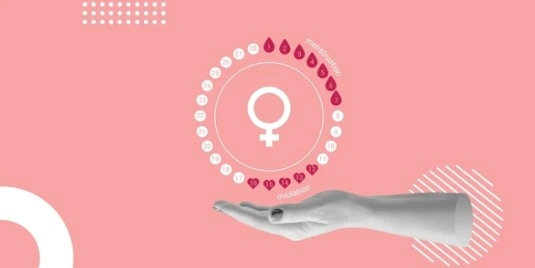
Estrogen-Gut Microbiome Axis
Estrogen is an important hormone for both men and women. Beyond reproductive function (yes, men need estrogen too), estrogen is important for metabolic, cardiovascular, and bone health. There are three types of estrogen: estrone (E1), estradiol (E2), and estriol (E3). E2 is the most biologically active estrogen. Estrogen is made primarily by the gonads (ovaries or testes), adrenals, and fat cells. Estrogen metabolism largely determines circulating estrogen levels. And guess what plays a large role in estrogen metabolism? The microbiome.
Estrogen Metabolism Basics
Estrogen metabolism primarily occurs in the liver with two stages, called hydroxylation and methylation. Essentially, the liver tacks on small compounds to estrogen to deactivate it. This is called phase 1 and phase 2 estrogen metabolism.
In phase 1 estrogen detox, the hydroxy group (oxygen and hydrogen molecules) can be added at different positions, which leads to metabolites with different biological activity. These metabolites can get into the bloodstream and interact with estrogen receptors throughout the body with different outcomes
2-hydroxy estrogens are considered the best metabolite because they only weakly bind to estrogen receptors and cause the least amount of DNA damage. The 16-hydroxy estrogens are strongly estrogenic, meaning they can bind tightly to estrogen receptors, which can stimulate tissue growth. 4-hydroxy estrogens bind to estrogen receptors the strongest. They also can be converted into another metabolite that damages DNA, which may contribute to risk of abnormal cell growth such as in the case of cancer.
Your body will make all three phase 1 metabolites - this is normal. Ideally, the majority of the metabolites will be 2-hydroxy and the 4-hydroxy metabolites will be minimized. The ideal amount of 16-hydroxy estrogens depends on the patient. For example, a menopausal or post-menopausal patient may benefit from higher amounts of 16-hydroxy estrogens stimulating estrogen receptors. But if someone has a personal or family history of estrogen-driven diseases, lower 16-hydroxy estrogen may be better.
Phase 2 estrogen detox helps to neutralize the phase 1 metabolites, so understanding phase 2 detox is important to the clinical implications of phase 1 detox. Phase 2 involves attaching a methyl group (carbon with three hydrogens). This is done by the COMT enzyme. Certain genetic variants in the COMT gene can result in decreased phase 2 detox. COMT requires S-adenosylmethionine (SAM) to work, which is a product of the methylation cycle. So if there are issues with the methylation cycle (genetic variants in multiple genes or B vitamin deficiencies), this can impede phase 2 estrogen detox. If phase 2 detox is impaired, this can result in higher levels of phase 1 metabolites, which may be damaging.
Some deactivated (conjugated) estrogen will be released into the blood to be eliminated by the kidneys in urine. But most is stored in the bile to be released in the small intestine. The end goal is that estrogen will be eliminated in the feces. But first, estrogen will interact with the microbiome. This is called phase 3 estrogen detox.
The Estrobolome
Estrobolome is a term to describe the collection of genes that express enzymes capable of reactivating estrogen (deconjugating). And many bacteria possess these genes. β−glucuronidases (GUS gene) and β−galactosidase are the primary enzymes that reactivate estrogen. It is estimated that 60 different genera of the human microbiome possess these genes.1 The Human Microbiome Project has identified 279 GUS genes classified as Bacteroidetes (52%), Firmicutes (43%), Verrucomicrobia (1.5%) and Proteobacteria (0.5%).1
Gut bacteria can also modify estrogen in other ways, which may shift the ratio of E1 to E2.1 Since E1 and E2 have different potencies, this could cause symptoms without changing total estrogen levels. More research is needed to understand the other ways in which the microbiome can modify estrogens.
So certain bacteria can express enzymes that will reactivate estrogen. That reactivated estrogen can be absorbed in the gut. It will first go back to the liver, where it may be metabolized again, but it may enter systemic circulation. This is called enterohepatic recirculation. It is important to note that enterohepatic recirculation happens primarily in the small intestine.
This means that your microbiome may have a significant influence on your estrogen levels. If you want to modify your estrogen levels, you may need to treat the microbiome. Research indicates that the microbiome may be an important treatment target for estrogen-driven diseases like breast cancer1, ovarian cancer1, endometrial cancer1, endometriosis1, and fibroids8.
Estrogens Impact on the Microbiome
We have seen how the microbiome can influence estrogen, but can estrogen influence the microbiome? Most likely yes. A growing body of research has looked at changes in the microbiome after menopause, when estrogen has steeply declined. While the research is not conclusive, so far we are seeing lower microbial diversity and lower abundance of microbial β-glucuronidases.1
Interestingly, the microbiome may also be related to menopausal symptoms like hot flashes, insomnia, and genitourinary symptoms. For example, one study found lower levels of Lactobacillus and Bifidobacterium and higher levels of Klebsiella in postmenopausal women with hot flashes compared to postmenopausal women without hot flashes.1
Testing
It is important to note that 16S rRNA sequencing cannot assess the estrobolome. Metagenomic sequencing (aka shotgun sequencing aka whole genome sequencing) can. However, just because the genes are there does not mean they are being expressed. It is also important to note that these stool tests are most likely measuring the estrobolome of the end of the colon only. The estrobolome in the small intestine may be more clinically significant.
While you technically can test your stool directly for beta-glucuronidase, I don’t recommend it. Why? First, beta-glucuronidase in your stool is not necessarily from your microbiome. Colon cells also make it.2 Knowing the source of beta-glucuronidase is important because it influences treatment. But more importantly is the accuracy of testing beta-glucuronidase in stool. Temperature, pH, salt concentration, protein concentration, and preservative all affect how stable beta-glucuronidase is in the sample.3 Dr. Adele Costabile at the University of Roehampton requires samples to be collected without preservative and frozen within minutes in order to test beta-glucuronidase. This is not happening in the commercial stool testing. So you can bet that any commercial stool test is not accurate.
For testing estrogen levels, blood or urine can be used. If you still have a menstrual cycle, you want to test 5-7 days after ovulation. You can use LH test strips to predict ovulation and determine the best day to test. This can also help in the case of irregular cycles or partial hysterectomy. If you are post-menopausal, you can test any day.
Blood testing can test total estrogen, estradiol, estrone, and estriol. It does not test estrogen metabolites. It is common for doctors to only test estradiol, so be sure to get all three estrogens tested or at least a total estrogen and estradiol. If you want to test your estrogen metabolites, urine testing is best, which is available through several functional lab companies.
Treatment Considerations
Fully addressing estrogen metabolism requires an outside-in approach. Start with targeting phase 3 detox, then phase 2, then phase 1.
Phase 3 Estrogen Detox
The fist consideration for phase 3 estrogen detox is intestinal motility. The idea is that slower motility may result in more estrogen reabsorption. Some older studies indicated there may be a connection between intestinal transit time and estrogen absorption but further research is needed.9 This idea has been simplified to constipation = more estrogen reabsorption. And this is not necessarily true. In most cases of constipation, transit time is actually normal, so this idea doesn’t necessarily pan out. We do know that there is a connection between estrogen and constipation. There are estrogen receptors in the colon, which when bound by estrogen, may inhibit smooth muscle contraction which could contribute to constipation.10 More research is needed to understand the connection between estrogen, constipation, intestinal transit time and estrogen reabsorption.
So while we do need more research, it is not a bad idea to make sure you are having 1-2 bowel movements a day before addressing phase 1 and phase 2 estrogen detox. Gentle osmotic laxatives like magnesium citrate/oxide with vitamin C may be effective. Long term use of stimulant laxatives such as Senna is not recommended due to dependency.
The other aspect of phase 3 detoxification is targeting beta-glucuronidase. A common treatment is calcium-d-glucurate, which can inhibit beta-glucuronidase.4 While this can result in less enterohepatic recirculation of estrogen and thereby lower estrogen, it is not addressing the cause per se. To treat the root cause, you will need to modulate the microbiome. This may include:
- Increasing plant protein in the diet5
- Increasing fruit in the diet5
- Increasing dietary fiber5
- Supplement with prebiotics like lactulose, inulin, or apple pectin6
Phase 2 Estrogen Detox
Potential therapeutics for phase 2 estrogen detox include:
- Magnesium
- B6
- Methyl B12
- Methyl folate
- SAMe
- TMG
- Choline
- Methionine
Phase 1 Estrogen Detox
When it comes to phase 1 detox, you need to consider your end goal. Do you want to decrease total estrogen? Do you want to decrease certain estrogen metabolites? Both?
If your goal is to decrease estrogen utilizing the 2-hydroxy pathway, DIM is a great tool. But it will lower total estrogen. You can also get more DIM in your diet by eating cruciferous vegetables, but supplementing is best to get a therapeutic dose. If you just want less 4-hydroxy metabolites, but don’t want your total estrogen to go down, then flavonoids and resveratrol may inhibit the enzyme that makes 4-hydroxy estrogens.
All the above may help to decrease estrogen, which may be important in premenopausal patients (patients who still have a menstrual cycle). In postmenopausal patients, treatment considerations may be the opposite. Beta-glucuronidase activity could be enhanced in order to increase low estrogen and improve menopausal symptoms. Research is looking at probiotics such as Lactobacillus intestinalis YT26 and strains of Levilactobacillus brevis and Lacticaseibacillus rhamnosus7, but more research is needed.
Remember to talk to your doctor before you make any changes to your diet, medications or supplements.
References
- Hu S, Ding Q, Zhang W, Kang M, Ma J, Zhao L. Gut microbial beta-glucuronidase: a vital regulator in female estrogen metabolism. Gut Microbes. 2023 Jan-Dec;15(1):2236749. doi: 10.1080/19490976.2023.2236749. PMID: 37559394; PMCID: PMC10416750.
- Siddiqui I, Majid H, Abid S. Update on clinical and research application of fecal biomarkers for gastrointestinal diseases. World J Gastrointest Pharmacol Ther. 2017 Feb 6;8(1):39-46. doi: 10.4292/wjgpt.v8.i1.39. PMID: 28217373; PMCID: PMC5292605.
- Flores R, Shi J, Gail MH, Gajer P, Ravel J, et al. (2012) Association of Fecal Microbial Diversity and Taxonomy with Selected Enzymatic Functions. PLOS ONE 7(6): e39745. https://doi.org/10.1371/journal.pone.0039745
- Calcium-D-glucarate. Altern Med Rev. 2002 Aug;7(4):336-9. PMID: 12197785.
- Lampe JW, Li SS, Potter JD, King IB. Serum beta-glucuronidase activity is inversely associated with plant-food intakes in humans. J Nutr. 2002 Jun;132(6):1341-4. doi: 10.1093/jn/132.6.1341. PMID: 12042456.
- Hu S, Ding Q, Zhang W, Kang M, Ma J, Zhao L. Gut microbial beta-glucuronidase: a vital regulator in female estrogen metabolism. Gut Microbes. 2023 Jan-Dec;15(1):2236749. doi: 10.1080/19490976.2023.2236749. PMID: 37559394; PMCID: PMC10416750.
- Honda S, Tominaga Y, Espadaler-Mazo J, et al. Supplementation with a Probiotic Formula Having β-Glucuronidase Activity Modulates Serum Estrogen Levels in Healthy Peri- and Postmenopausal Women. Journal of Medicinal Food. 2024;27(8):720-727. doi:10.1089/jmf.2023.k.0320
- K VK, Bhat RG, Rao BK, R AP. The Gut Microbiota: a Novel Player in the Pathogenesis of Uterine Fibroids. Reprod Sci. 2023 Dec;30(12):3443-3455. doi: 10.1007/s43032-023-01289-7. Epub 2023 Jul 7. PMID: 37418220; PMCID: PMC10691976.
- Lewis SJ, Oakey RE, Heaton KW. Intestinal absorption of oestrogen: the effect of altering transit-time. Eur J Gastroenterol Hepatol. 1998 Jan;10(1):33-9. doi: 10.1097/00042737-199801000-00007. PMID: 9512951.
- Wen J, Zhao Y, Huang C, Li S, Li P, Zhou Y, Yan Z, Zhang G. Estrogen inhibits colonic smooth muscle contractions by regulating BKβ1 signaling. PLoS One. 2023 Nov 10;18(11):e0294249. doi: 10.1371/journal.pone.0294249. PMID: 37948436; PMCID: PMC10637685.
